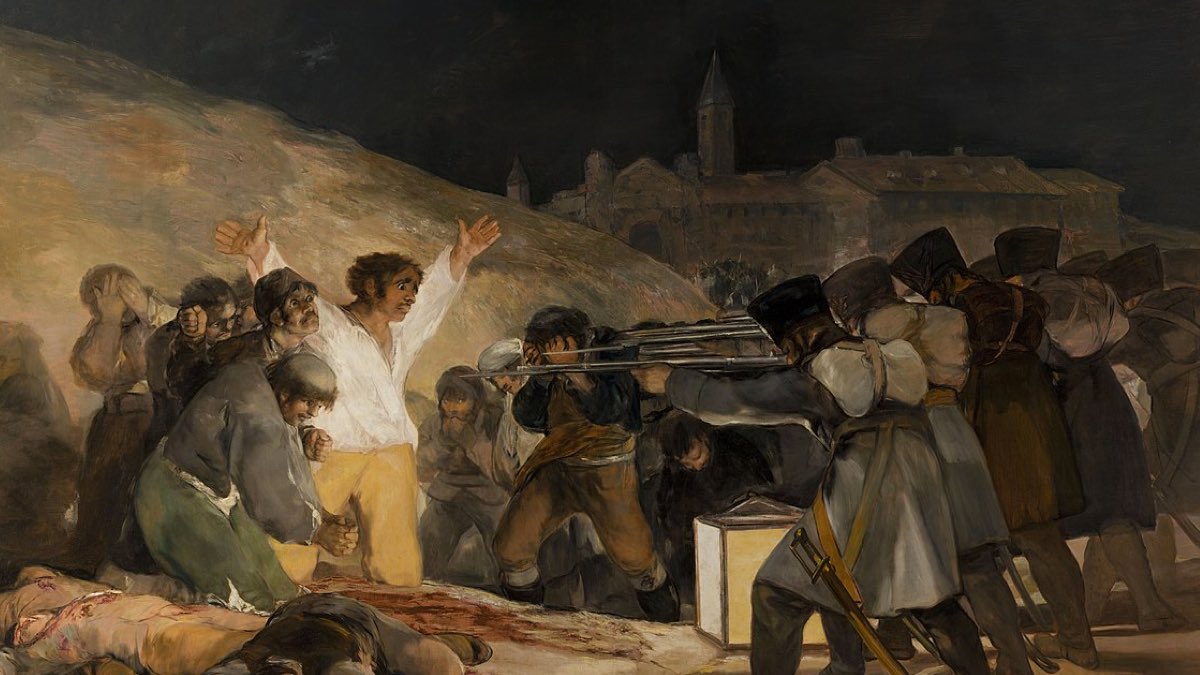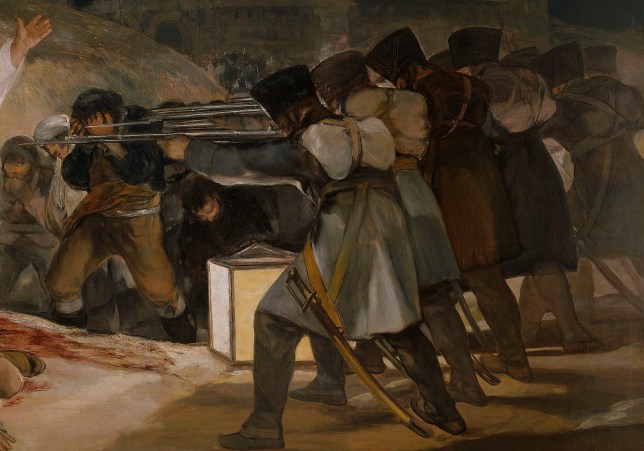
How Goya Changed The Way We Depict War
Francisco de Goya was a Spanish tenebrist, political painter, and virtuoso engraver. He is without a doubt one of the most important and influential creative thinkers throughout all of art history. Goya was often commissioned by the Spanish court for many of his most renowned works. Both a courtier and a rebel, Goya realized a body of work that is rooted in history, fantasy, and the grotesque. Together, with Artsper, explore how Goya revolutionized the way the world of art depicts images of war.
An anti-war work of art
In the canon of art history, Goya’s Third of May 1808 is known as one of the greatest, Western works of the 19th-century. The painting is celebrated for its formal qualities but is known mostly for its emotional overtones and political stance. In fact, many art historians argue that it is the greatest anti-war painting of all time. In order to understand the weight of this belief, it is essential to explore the historical context behind the legendary artwork.
Rooted in history

The year was 1807 and Napoleon, the emperor of France, set out to conquer the world. This brought him and his army to Spain. The Spanish king, Charles IV, wished to partner with the French power, in an attempt to conquer Portugal. In doing this, Napoleon and his troops easily entered Spanish borders. However, this supposed allyship between France and Spain was in fact only a trap to allow Napoleon’s army entry into the country. After which, Napoleon’s true desires became clear: he wished to take control of the region, crowning his brother, Joseph Bonaparte, the reigning king of Spain.
On the second of May, 1808, hundreds of Spanish civilians rebelled against French occupation. A day later, on the third of May, Spanish freedom fighters were rounded up by French authorities and massacred on the streets of Madrid. To this day, the third of May is one of the bloodiest days in Spanish history. Although Goya was not present for the horrendous bloodshed, the death of his compatriots and the devastating reality of their final moments had a lasting impact on the artist. Six years later, after receiving a commission from the Spanish government, Goya set out to commemorate this moment in history with the creation of two powerful paintings: The Second of May and The Third of May.
An eerie representation

Goya received patronage from the Spanish government to commemorate the glory and ultimate tragedy of the Spanish freedom fighters who lost their lives. Although the reality of the event was ultimately devastating, the government anticipated that the commissioned painting would be heroic. Instead, Goya insisted on painting the event with emotion. He wished to transmit the horrors of the day to viewers years, decades, and centuries later. Goya utilized his quintessential style that is rooted in academic training to portray the emotional depth and horror of modern warfare.
Goya creates an eerie atmosphere in The Third of May. Not only does the painting recount a chilling moment before the massacre of Spanish civilians, but it is the way in which Goya portrays the French soldiers that is truly haunting. To the right of the canvas there is a colonnade of faceless, anonymous soldiers. The fact that their faces and identities are unknown to the viewer, heightens the emotional experience as a spectator. They are presented as executioners. Their poses are synchronized, robotic, without any ounce of empathy; they are simply following orders.
The powerful force of the martyr

The executioners in the painting are frightful due to the fact that Goya portrays very little of them or their features. In contrast, the victims in the painting, the Spanish freedom fighters, evoke a sense of anguish and horror. This is because Goya paints them in great detail, making their faces and fear nearly unforgettable to any spectator.
To the left of the canvas, the freedom fighters are cornered in a line, only moments before the end of their lives. One of the central figures has been at the center of many art historical analyses, as it is believed that he is representative of the martyr figure. He is wearing a white shirt, with his arms in the air, to either side, an ode to Christ’s crucifixion. In fact, he even has wounds on his hands, an unmistakable allusion to Christ’s stigmata. The man in white is evidently a victim but not entirely a martyr. His death is not for the sins of all mankind or for a specific cause. His death is without sympathy, it is in cold blood. An overarching message behind Goya’s anti-war sentiment.
A long-standing impact

Goya’s painting has had a long-standing impact on the history of art. Not only did it spread a political and moving message to its spectators, but it also inspired generations of artists. It is a turning point in art history, a diversion from traditional depictions of Christian art and portrayals of war. There are also many art historians who believe that The Third of May is considered the first painting of modern art. The painting is revolutionary in every sense. In terms of subject, style, and political intent, it made an impact on artists, art lovers, and critics alike. In particular, it inspired works by Édouard Manet and Pablo Picasso’s renown Guernica.
Interested in exploring more works inspired by art history? Discover them on Artsper!

About Artsper
Founded in 2013, Artsper is an online marketplace for contemporary art. Partnering with 1,800 professional art galleries around the world, it makes discovering and acquiring art accessible to all.
Learn more













